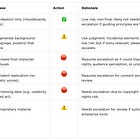|
Generative AI Breaks "Faster, Cheaper, Better—Pick Two". The Catch: Complexity.
Creators are proving they can deliver all three by orchestrating 10+ tools. They are also reviving Marshall McLuhan's question: Can you serve culture when you're not built to move at culture's speed?
[Author’s Note: In last Monday’s essay, I neglected to include Amazon as an existing Hollywood player—it owns MGM Studios—that also owns cloud infrastructure (Amazon Web Services) to protect its intellectual property in the AI era.]
I am back from LA with plenty of new insights from conversations in Hollywood and at the Artist & The Machine AI & Creativity Summit. The biggest insight is that generative AI breaks conventional wisdom about the traditional business maxim—”Faster. Cheaper. Better. Pick Two”.
That maxim assumes you must sacrifice one and we have seen this previoulsy in traditional production:
Faster + Cheaper = Poor quality
Cheaper + Better = Slow to market
Better + Faster = Expensive
So far, generative AI seems to be breaking these constraints. We are seeing content emerge that is faster, cheaper *and* better than traditional production.
The catch is complexity. One creator at the Artist & The Machine AI & Creativity Summit noted: “The requirements of good storytelling drive those costs up.” But the costs emerge from managing the complexity of using 10+ specialized platforms—which creators like Josh Kerrigan aka Neural Viz list on posts to X—to achieve quality.
According to Adobe, more than 60% of creators use multiple creative AI models in their workflow. Craig Elimeliah—Code and Theory’s Chief Creative Officer—calls this “the age of model interoperability, where precision, accessibility, and creative control matter more than provenance or purity.” In this moment,
“The craft becomes knowing how to weave context, models, and outputs together. When to use Midjourney’s aesthetic sensibility. When to switch to Runway for motion. When to bring in Claude for structure or reasoning. When to layer Firefly for commercial safety.”
In one sense, with all these tools generative AI is faster and cheaper than traditional production processes (which can take months or years). Then again—assuming that budgets for generative AI TV shows, movies or ads are now 10% of what they had been in traditional media—it is easy to imagine a studio or a brand using that extra budget to push the limits of the technology.
It is also easy imagining their struggle with the interoperability of tools to achieve brand perfection, and spending more. Business Insider highlighted how the truck sizes change in Coca-Cola’s holiday ad, which was produced by entertainment studio Secret Level (and I wrote about its founder Jason Zada in June’s “Four Signals Cutting Through the AI Noise in Media”).
Coca-Cola released the ad anyway, accepting the imperfections. It is easy to imagine a more risk-averse brand or Hollywood studio choosing differently and spending more.
It is also easy to see from the Coca-Cola holiday ad why faster and cheaper generative AI content will still find wins. “Better” is no longer a binary standard but a spectrum of outcomes depending on the combination of platforms used.
How much complexity is a studio or a brand willing to manage to move towards the high end of that spectrum?

Complexity, Control & Scale
Netflix and Paramount want “more content,” advertisers want more sponsorship opportunities, while creators seek to generate unprecedented frequency and scale of output. Netflix now has human authorship requirements for generative AI content. These guidelines require generative AI outputs to “not replicate or substantially recreate identifiable characteristics of unowned or copyrighted material.”

